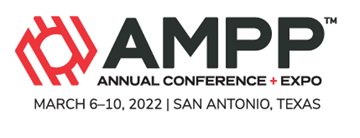Search
Maritime
View as
Sort by
Display
per page
Development of Copper Alloys for Seawater Service from Traditional Application to State-Of-The Art Engineering
Product Number:
51317--9382-SG
ISBN:
9382 2017 CP
Publication Date:
2017
$20.00
Distributed Sacrificial Cathodic Protection – A New Cost Effective Solution to Prevent Corrosion on Subsea Structures
Product Number:
51317--8941-SG
ISBN:
8941 2017 CP
Publication Date:
2017
$20.00
Effect of Water Soluble Salts Affecting Long-Term Durability of Epoxy Coating on Carbon Steels
Product Number:
51317--9284-SG
ISBN:
9284 2017 CP
Publication Date:
2017
$20.00
Effectiveness of Epoxy and Moisture-Cure Polyurethane Coatings in Corrosion Mitigation of Embedded Rebar- an Experimental Study
Product Number:
51320-14405-SG
Publication Date:
2020
$20.00
Enhanced Biocide Mitigation of Microbiologically Influenced Corrosion In Enhanced Oil Recovery
Product Number:
51317--9039-SG
ISBN:
9039 2017 CP
Publication Date:
2017
$20.00
Environmental Modification And Atmospheric Corrosion: Clear Water Rinsing, Covering, And Seawater Spray
Product Number:
51322-17990-SG
Publication Date:
2022
$20.00
Evaluation of Alloys for Marine Exhaust Scrubbers
Product Number:
51317--8972-SG
ISBN:
8972 2017 CP
Publication Date:
2017
$20.00
Evaluation of Eco-Friendly Chemical Pre-Treatment on Aluminum Alloys in Oceanic Environments
Product Number:
51219-203-SG
Publication Date:
2019
$20.00
Galvanic Corrosion: A Practical Guide for Engineers, 2nd Edition (E-book)
Product Number:
37625-E
ISBN:
978-1-57590-353-8
Publication Date:
2017
$100.00
Galvanic Protection Coatings for 5xxx Series Aluminum Alloys
Product Number:
51317--8885-SG
ISBN:
8885 2017 CP
Publication Date:
2017
$20.00
In-situ CPT of Austenitic and Duplex Stainless Steels on Chloride Containing Environments
Product Number:
51317--9312-SG
ISBN:
9312 2017 CP
Publication Date:
2017
$20.00












